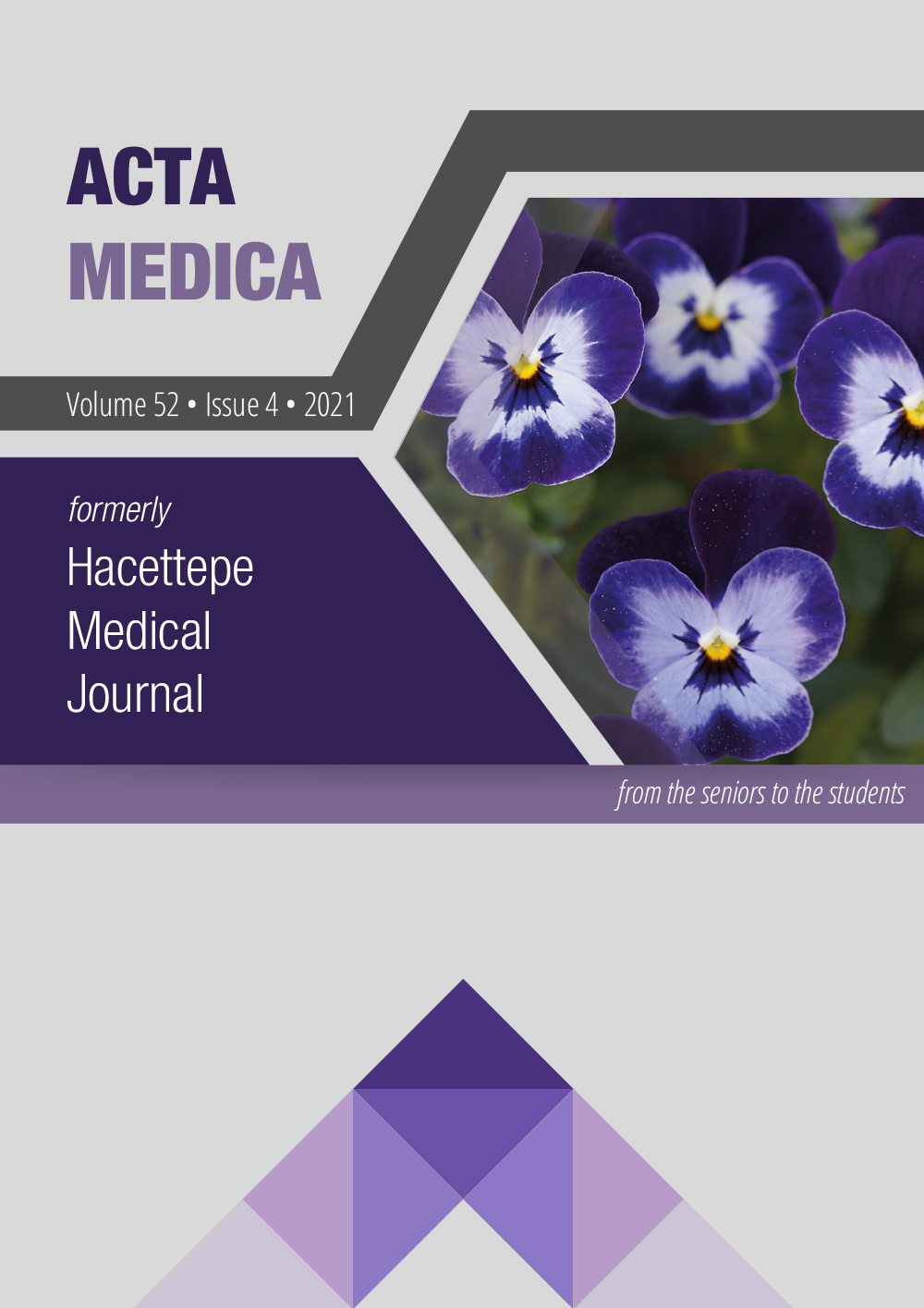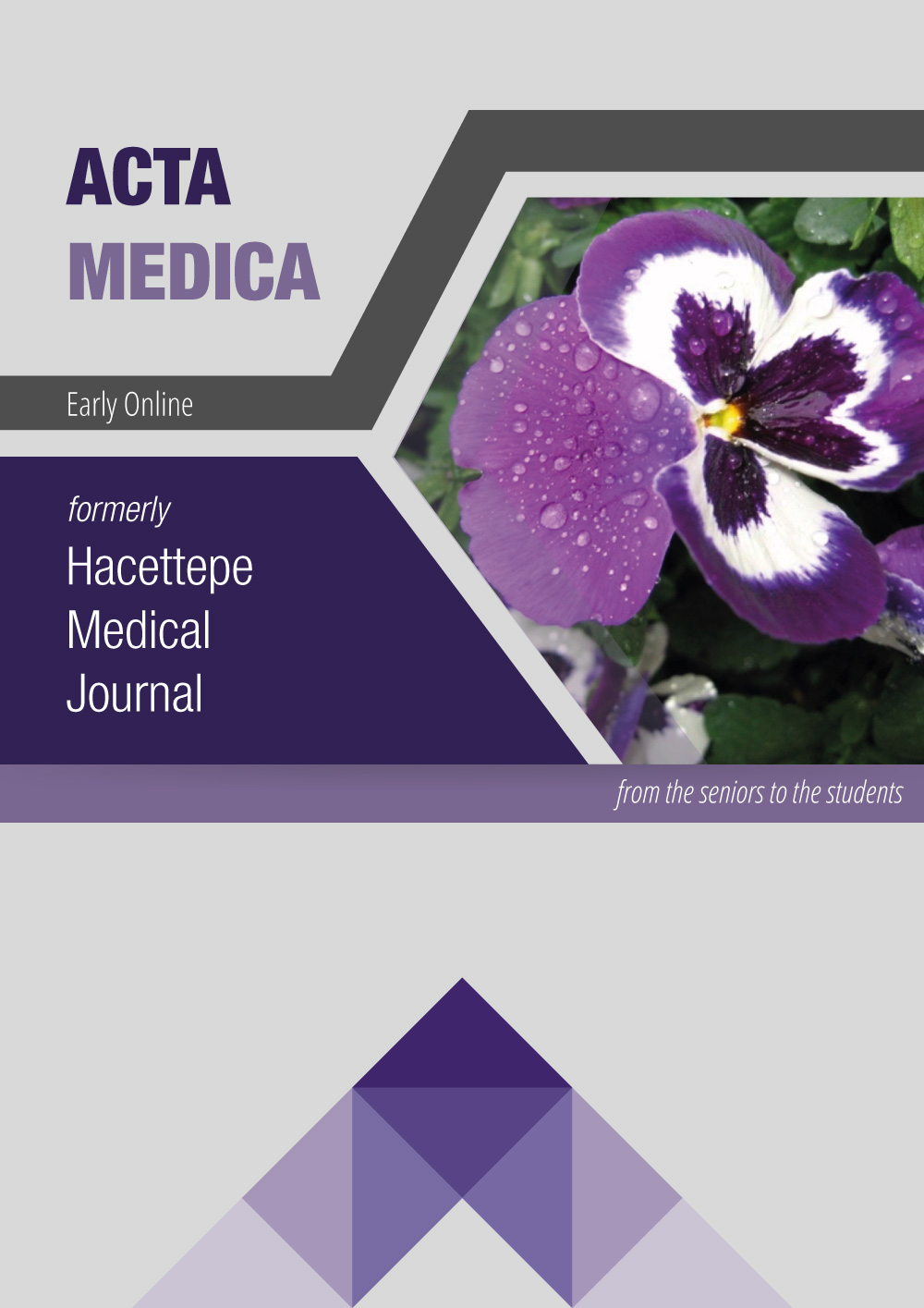The Prevalence of Hilar Lymphadenopathy and Related Factors in Pneumoconiosis Patients of a University Hospital Occupational Diseases Polyclinic
DOI:
https://doi.org/10.32552/2021.ActaMedica.595Abstract
Objective: Pneumoconiosis is a fatal, irreversible interstitial lung disease caused by various inorganic dust and chemicals. The disease is radiologically characterized by micronodules, pleural plaques, emphysema, mediastinal and hilar lymphadenopathies (HL). There are hypotheses that fibrotic lymph nodes increase the dust load of the lungs in patients with pneumoconiosis. Our aim is to determine the frequency of HL and related factors in pneumoconiosis patients admitted to our unit in the light of current data.
Material and Methods: 76 patients diagnosed with pneumoconiosis who applied to our unit between November, 2015 and October, 2020 were retrospectively screened. Sociodemographic characteristics, radiological, laboratory and clinical findings were evaluated. The frequency of HL and related factors were analyzed.
Results: We found the rate of HL as 29,3%. The average age was 43,78 ± 7,54. There was no significant age difference between patients with and without HL (44,41±8,90 / 43,34±6,93 p=0,578). All of the patients were male. As the ILO (International Labor Organization) category rose, we saw an increase in the number of HL. 59,1% of the patients with HL had at least one active complaint (dyspnea, cough or sputum). The most common complaint was dyspnea (50%). We found a statistically significant increase in NLR (Neutrophil to Lymphocyte Ratio) and TLR (Thrombocyte to Lymphocyte Ratio) values in patients with HL compared to those without (2,38±0,70; 1,97±0,59 p=0,016 and 133,79±39,06; 109,03±29,00 p=0,005). Another important finding was that the albumin values of patients with HL were found to be statistically significantly lower (4.42 ± 0.41; 4.67 ± 0.29 p = 0.008).
Conclusion: 29.3% of patients had HL. We found significant increase in NLR and TLR in pneumoconiosis patients with HL and decrease in serum albumin levels. We think that these markers may have prognostic value in pneumoconiosis patients with lymphadenopathy.


